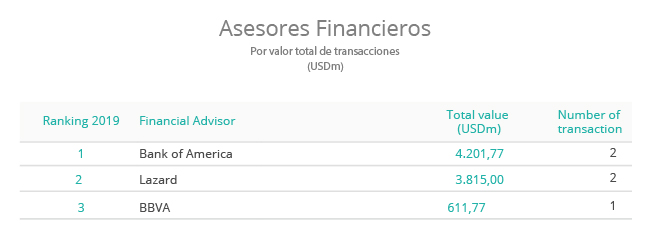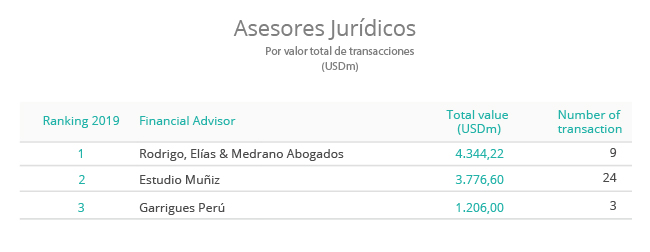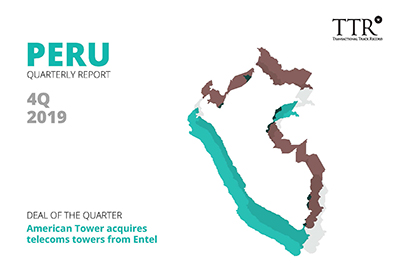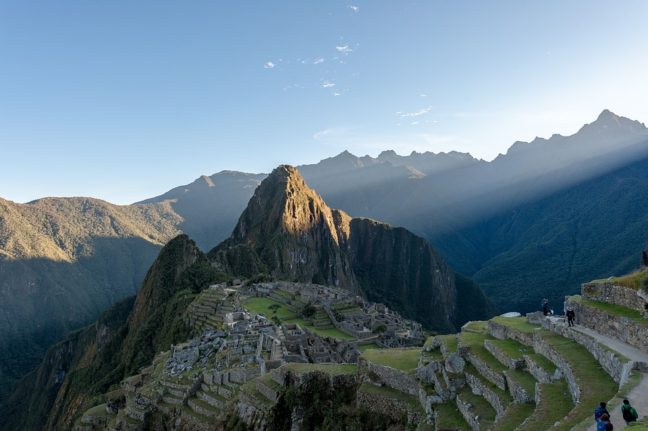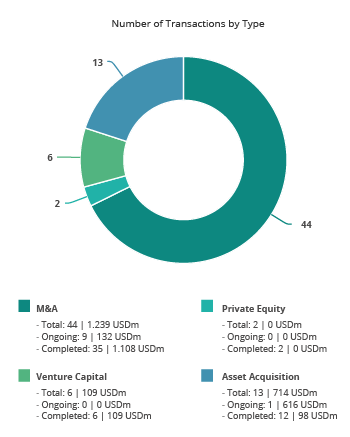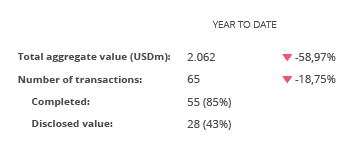Capital movilizado en el mercado M&A de Perú
aumenta un 2,72% en 2019
De enero a diciembre se han registrado 135 transacciones en el país
En el cuarto trimestre se han registrado 32 operaciones con un importe de USD 852,11m
Sector Financiero y de Seguros, el más destacado del año, con 18 operaciones
El mercado de M&A en Perú ha contabilizado en 2019 un total de 135 operaciones, de las cuales 50 suman un importe no confidencial de USD 8.162m, de acuerdo con el informe trimestral de Transactional Track Record. Estos datos reflejan un aumento del 2,72% en el capital movilizado y una disminución del 15,63% en el número de operaciones, con respecto al mismo periodo de 2018.
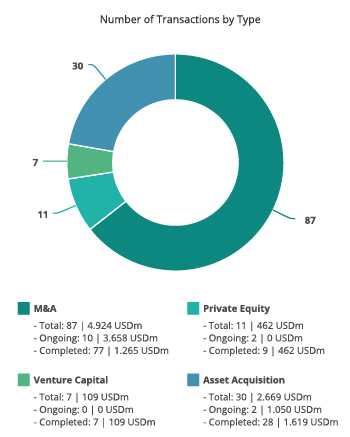
Por su parte, en el cuarto trimestre de 2019 se han contabilizado un total de 32 operaciones con un importe agregado de USD 852,11m.
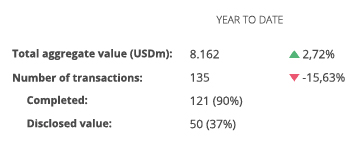
En términos sectoriales, el Financiero y de Seguros es el sector más activo del año, con un total de 18 transacciones.
Ámbito Cross-Border
Por lo que respecta al mercado Cross-Border, en 2019 las empresas peruanas han apostado principalmente por invertir en Colombia, con 4 operaciones, seguido por México, con 4 y 3 transacciones, respectivamente. Por importe, destaca Uruguay, con USD 490m.
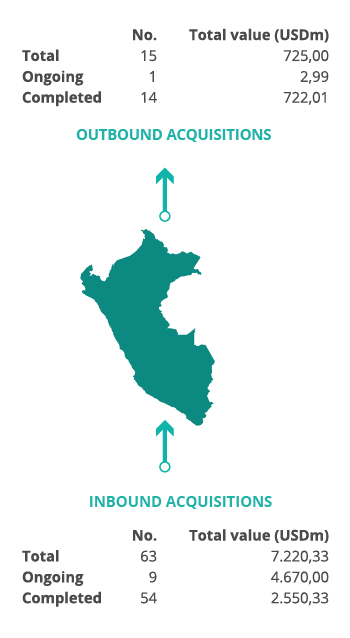
Por otro lado, Estados Unidos, con 14 operaciones, y España y Colombia y Chile, con 9, 7 y 6 operaciones en cada país, respectivamente, son también los países que más han apostado por realizar adquisiciones en Perú. Por importe destaca Hong Kong, con USD 3.815m.
Private Equity y Venture Capital
Hasta diciembre de 2019 se han producido un total de 11 transacciones de Private Equity valoradas en USD 462m, las cuales representan una tendencia estable en el número de operaciones y una disminución del 57,68% en el capital movilizado con respecto a diciembre de 2018.
Por su parte, Perú ha registrado hasta diciembre 7 operaciones de Venture Capital valoradas en USD 109m, lo que representa un descenso del 30% en el número de operaciones y un aumento del 534,44% en el capital movilizado con respecto al mismo periodo del año pasado.
Compra de Activos
En el segmento de Asset Acquisitions se han contabilizado a lo largo del año un total de 30 operaciones, de las cuales 17 tienen un importe no confidencial agregado de USD 2.669m. Esto supone un aumento del 36,36% en el número de operaciones y un alza del 591,42% en el importe de las mismas con respecto al mismo periodo del año anterior.
Transacción Destacada
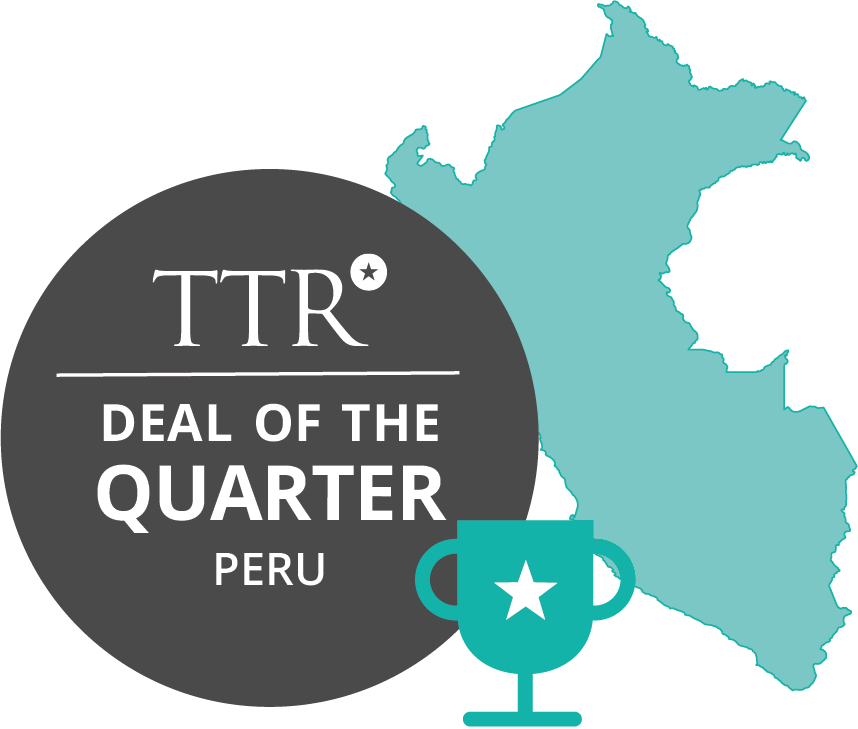
Para el cuarto trimestre de 2019, Transactional Track Record ha seleccionado como operación destacada la relacionada con American Towers, el cual ha adquirido un portfolio de torres de telecomunicaciones (1.980 en Chile y 1.262 en Perú) de Entel por USD 772m.
La transacción ha estado asesorada por la parte legal por DLA Piper y por Claro y Cía. Abogados. Por la parte de asesoría financiera, la transacción ha sido asesorada por Asset Chile; Banchile Citi Global Markets y por Banco Santander Perú.
Ranking de Asesores Legales y Financieros
